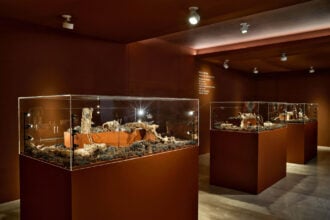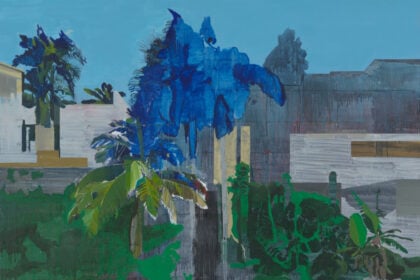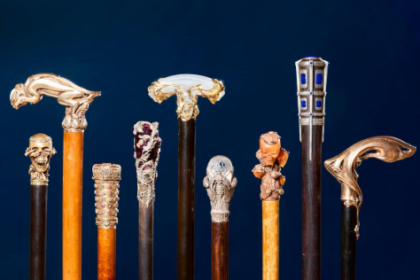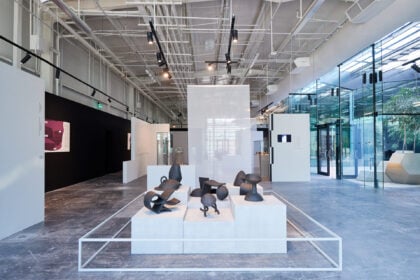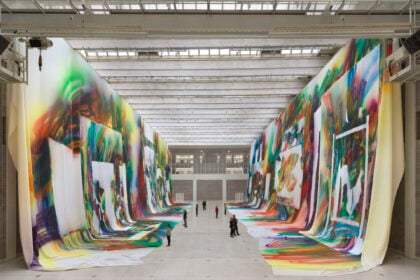More than 30 years after Dame Paula Rego (1935–2022), the National Gallery’s first Associate Artist (1990–92), was invited to create a mural for the Sainsbury Wing Dining Room, a new exhibition will celebrate the relationship of one of the most ambitious of Rego’s public commissions titled Crivelli’s Garden to the National Gallery and its collection.
The exhibition which had long been planned in collaboration with Paula Rego, who died on 8 June last year, will unite the monumental 10-metre-long artwork with the 15th-century altarpiece by Carlo Crivelli that inspired it, alongside life studies Rego produced of the Gallery colleagues that feature in the final painting.

Crivelli’s Garden is a tribute to storytelling and the strong women that surrounded Rego throughout her life. Representing female saints and mythological women and set within a maze-like Portuguese garden, the painting reimagines the narratives of these women to give them more power and visibility. Rego did not just replicate the women saints portrayed in the National Gallery Collection but drew inspiration from them to depict figures and people she knew. These included friends, members of her family and even staff members at the Gallery whom she asked to sit for her, such as Erika Langmuir and Ailsa Bhattacharya who worked in the Education Department at the time. Of her models she stated, ‘casting is quite important because it’s part of my stimulus as a painter.’
Rego explored the narratives of women in biblical history and folklore found in paintings across the collection and in stories from the medieval Golden Legend, a compilation of lives of the saints written by Jacobus de Voragine in the 13th century.
In her work Paula Rego challenged the dominance of the male gaze in Western art history and in Crivelli’s Garden she populated the scene with courageous female figures inspired by the Virgin Mary, Saint Catherine, Saint Margaret, Saint Cecilia, Mary Magdalene, Judith and Delilah. They share the garden with other women from fables, biblical and mythological stories. Rego saw the work as a tribute to the artists who had also used the Golden Legend as a source for their paintings.
Dame Paula still held many drawings from the original sittings, and the exhibition will include a selection of these alongside sketches for the final piece from her personal collection. The different layers and storylines of Crivelli’s Garden as well as the art historical and personal references Rego included will be explored allowing the viewer to understand Rego’s creative process better.
As a composition, the work demonstrated a new direction for Rego. It explores themes that span her career: the way women and their experiences are represented in paintings, and, more widely, the role of women within society and religion. She also used the blue and white tiles of her native Portugal to adorn the walls of the fictional garden, connecting back to memories of her childhood when she was surrounded by stories depicted on the tiled walls of her family home.
The commission for Crivelli’s Garden was an addition to her brief for the residency, in which she had been invited to produce new artworks inspired by the collection for her subsequent exhibition, Tales of the National Gallery, which was presented in the Sunley Room between December 1991 and March 1992.
During her two-year residency, Rego occupied the artist’s studio which was then in the basement of the Gallery. She would often describe her experience as being like a scurrying animal. To quote her from an interview about her time at the Gallery:
‘I could creep upstairs and snatch at things, and bring them down with me to the basement, where I could munch away at them. And what I brought down here from upstairs varied a lot, but I always brought something into my den.’
We can imagine that it was in this spirit that Crivelli’s Garden was made. The mural’s concept and structure were triggered by the predella panel of Carlo Crivelli’s altarpiece La Madonna della Rondine (The Madonna of the Swallow; after 1490) made for S. Francesco dei Zoccolanti, Matelica (a small town in the Marches, Italy). Each of the five scenes of the panel is dedicated to a saint. Flanked at either end with depictions of Saint Catherine and Saint George, the stories of the Nativity, Saint Jerome and Saint Sebastian are shown in scenes with acute linear perspectives. Rego imagined a world in which Crivelli’s saints would co-exist within the same space and so decided to create her own version of the garden.
This exhibition will celebrate Rego’s close ties with the National Gallery and the importance of Crivelli’s Garden in her painting career and reveal its legacy as an inspiration for new generations of artists.
The accompanying catalogue is the first-ever dedicated to this radical artwork and its celebration of storytelling. It features an original fictional work by acclaimed novelist Chloe Aridjis, written in response to Rego’s painting, as well as an essay by curator Priyesh Mistry.
Priyesh Mistry, Associate Curator, Modern and Contemporary Projects, says ‘Dame Paula Rego’s radical painting has consistently given women a voice over repression in a male-dominated society and art world. Her work remains as vital today as it was over 30 years ago when she first painted Crivelli’s Garden and continues to serve as an inspiration to new generations of artists and writers. This exhibition will be our opportunity at the National Gallery to celebrate her legacy and influence.’
National Gallery Director, Dr Gabriele Finaldi, says ‘Dame Paula Rego loved being in the National Gallery’s artist studio and relished being able to spend many hours with the paintings. They triggered her memory and imagination and led to the creation of a work both joyous and unsettling, Crivelli’s Garden, which mixes Renaissance saints, biblical heroines, fable and myth.’
More information at nationalgallery.org.uk


